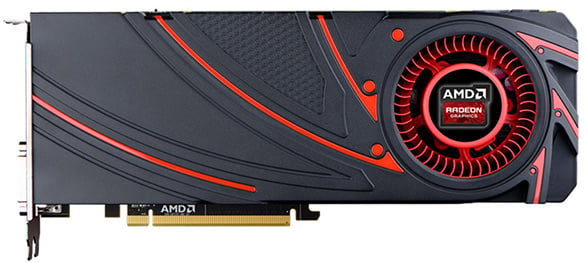Sales Data Suggests AMD's Graphics Share Surged In October, But NV Still Holds The Channel
Over the last few weeks, AMD has been on a massive PR and gaming blitz. The company has rebranded and re-priced its Radeon HD 7000 family as the R7/R9 series of cards and kicked off a new era at the high end with the Radeon R9 290 and R9 290X. Toss in the launch of two AMD-powered consoles and the discussion around next-gen APIs like Mantle, and it's been a full-court press from Team Red, just in time for the holidays. According to OEMs we've spoken to, the attack is paying off.
AMD's share of the boutique OEM market has risen significantly, by up to 3-5x depending on the manufacturer. Up until September, the boutique market was largely dominated by Nvidia, but price cuts on the R9 280X and the dominating performance from the R9 290X and R9 290 have snapped up market share. Interestingly, Crossfire attach rates have been extremely high, with over one-third of customers who bought a single R9 290X actually opting for two of them according to the OEM we spoke to, who wishes to remain anonymous for obvious reasons.
Nvidia Dominates the Retail Channel

While the OEM we spoke to indicated that demand for AMD hardware has surged, we don't see the impact so dramatically in the retail channel. Ignoring the low-end cards listed as best-sellers, the high-end sales charts at both Amazon and NewEgg are mostly Team Green hardware. The difference makes sense -- AMD appears to have prioritized shipping R9 290-class hardware to system builders first, and the channel second. That situation has begun to change -- the 290X was scarce on the ground in the week following launch, but there are multiple SKUs in stock now. We also see the R9 280X (aka the Radeon 7970) popping up here and there, reflecting its strong price/performance proposition.
Nvidia has dug in with the GTX 780 Ti at the highest end, and cut prices on the GTX 780 and GTX 770 to compensate for AMD's own moves. Combine that with its strong retail availability, and it's going to be tough for AMD to make major across-the-board inroads.
What this means, in aggregate, is that AMD"s sales figures are moving in the right direction, but that the total impact on Q4 sales is still unclear. If the company can arrange for strong availability by late November, it could clean up in the lucrative Christmas season. Nvidia may lose a few percentage points of share, particularly at the high end, but it's not clear how large the change will be. Since high-end cards carry high margins, even a small shift in total GPU sales could boost the company's revenue at a critical time. With the PC market shaky and Q4 figures not expected to be dramatically better than Q3's, boosting GPU sales is one way AMD can improve its bottom-line financials.
AMD's share of the boutique OEM market has risen significantly, by up to 3-5x depending on the manufacturer. Up until September, the boutique market was largely dominated by Nvidia, but price cuts on the R9 280X and the dominating performance from the R9 290X and R9 290 have snapped up market share. Interestingly, Crossfire attach rates have been extremely high, with over one-third of customers who bought a single R9 290X actually opting for two of them according to the OEM we spoke to, who wishes to remain anonymous for obvious reasons.
Nvidia Dominates the Retail Channel

While the OEM we spoke to indicated that demand for AMD hardware has surged, we don't see the impact so dramatically in the retail channel. Ignoring the low-end cards listed as best-sellers, the high-end sales charts at both Amazon and NewEgg are mostly Team Green hardware. The difference makes sense -- AMD appears to have prioritized shipping R9 290-class hardware to system builders first, and the channel second. That situation has begun to change -- the 290X was scarce on the ground in the week following launch, but there are multiple SKUs in stock now. We also see the R9 280X (aka the Radeon 7970) popping up here and there, reflecting its strong price/performance proposition.
Nvidia has dug in with the GTX 780 Ti at the highest end, and cut prices on the GTX 780 and GTX 770 to compensate for AMD's own moves. Combine that with its strong retail availability, and it's going to be tough for AMD to make major across-the-board inroads.
What this means, in aggregate, is that AMD"s sales figures are moving in the right direction, but that the total impact on Q4 sales is still unclear. If the company can arrange for strong availability by late November, it could clean up in the lucrative Christmas season. Nvidia may lose a few percentage points of share, particularly at the high end, but it's not clear how large the change will be. Since high-end cards carry high margins, even a small shift in total GPU sales could boost the company's revenue at a critical time. With the PC market shaky and Q4 figures not expected to be dramatically better than Q3's, boosting GPU sales is one way AMD can improve its bottom-line financials.

